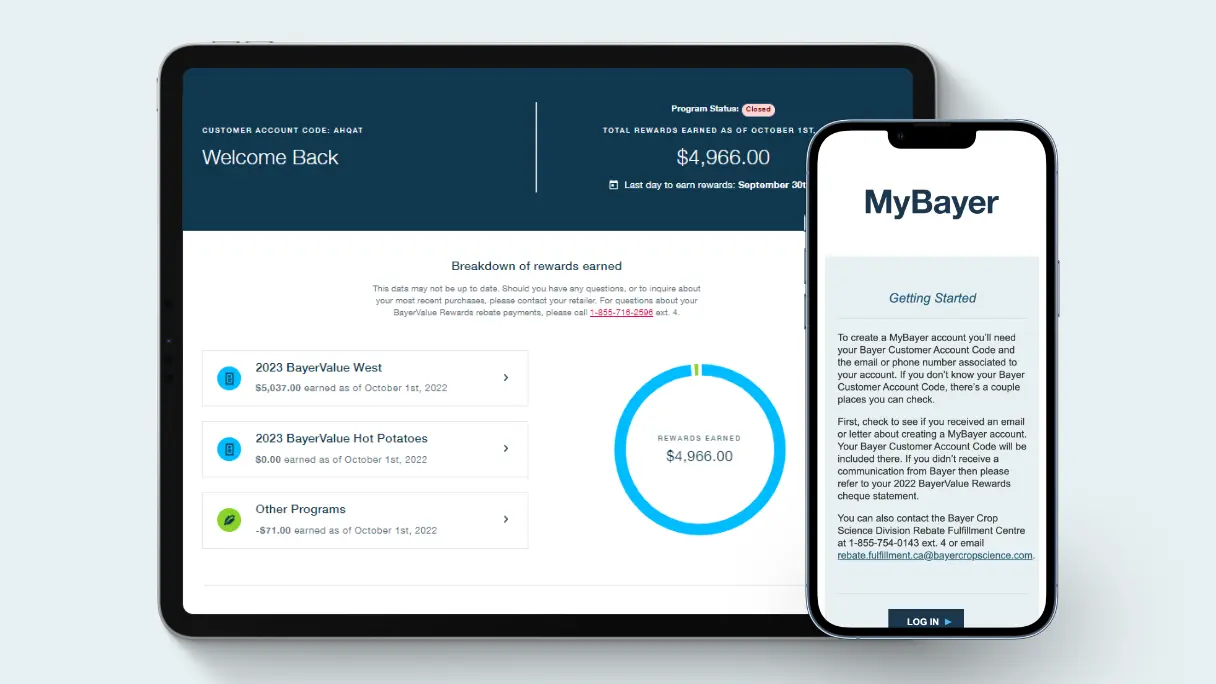6 READ-TIME
Help boost the bottom line with FieldView
February 3, 2024
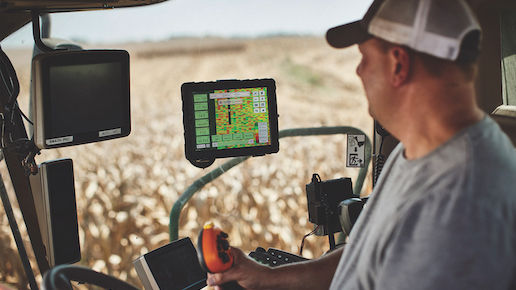
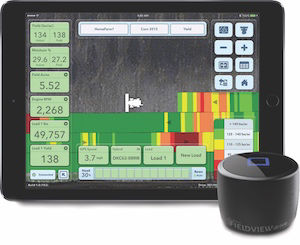
From drones to driverless tractors, cutting edge tools have transformed farming — in a good way. As with many sectors today, agriculture is applying the latest technology to boost efficiency, productivity and, ultimately, the bottom line. In large part, it’s about enhancing precision in the field and finding the best approach for your farm with instruments like FieldView.
PLANTING, PLANNING AND PRODUCING
Technology has clearly left its mark on Lexie Adamson and her brother Lance, fourth generation farmers in Harris, SK. On their 8,500-acre grain operation, they have employed FieldView for the last two years to help maximize the return on their time and effort. “FieldView is a great way to organize our data from the field and make it easier to access and analyze,” says Lexie. “It can be as simple as spotting a rock, ‘pinning’ it by clicking on the screen and sending that information to my brother as a heads-up.”
For Lexie, one of FieldView’s main applications is aiding with set-up and monitoring of field trials for fertilizer or chemicals, as she can isolate a certain area for that purpose. In a recent fungicide trial, FieldView demonstrated that areas of the field receiving spray attained higher yields than those that were left alone.
They also call on FieldView in a critical area for farmers: planning. “To prepare for the 2024 growing season, we are applying the technology to examine the data from last year, identify areas of the field that were better or worse than normal, and adjust our seeding and fertilizer rates accordingly.”
TAKING THE REINS
At times, Lexie and her brother will consult an agronomist to help chart the right course, using FieldView to pull up the data and share it. With or without that consultation, however, the biggest change in the planning process is that they are in control.
“It used to be that other companies took our data and developed a plan, but we weren’t part of creating the map and seeing their reasoning on why we should seed something in particular, for example. With FieldView, we control the information and make the ultimate decisions on how to proceed.”
As FieldView becomes adaptable to other programs, the siblings will use it in conjunction with software like AgExpert — for accounting — and other on-farm programs to aid in decision-making.
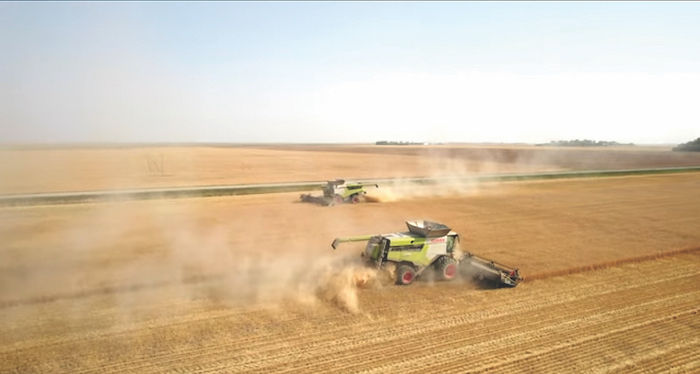
Farm Harvest
MAPPING OUT SUCCESS
They also employ the technology in real time, overlaying the map where Lance has sprayed or seeded and consulting that map in the combine so they don’t overlap each other in the field. As well, they can view areas they are spraying and gauge the impact.
For her part, Lexie finds great value in the ability of FieldView to easily share data.
“We can share the information with our cellphone and access it from anywhere. It also helps to share it between equipment like combines to ensure that they are all running at the same speed and settings.”
With both Lexie and Lance, the greatest benefit of FieldView is in organizing all of their data in one place and having ready access anytime, from virtually anywhere. “This tool makes for better management, planning and productivity, so the impact has been enormous.”
THE VIEW FROM ABOVE
Those sentiments are echoed by Sean MacKey, who farms 750 acres with his wife, Kerry Schubert, near New Liskeard, ON. Together, they grow soybeans, wheat, peas, oats, canola and cover crops. Though he has only been using FieldView for eight months, he finds a lot to like.
“We receive regular rain reports, along with field health imagery,” says MacKey. “This is helpful because rainfall amounts can vary widely within two or three miles. By gaining a bird’s eye view, we can determine which areas need spraying and see the back 50 acres that aren’t visible from the road.”
Like Lexie Adamson, he appreciates the pins for marking parts of the field. “I colour code everything, such as blue for tile outlets, so I know where to find them when I need to make sure they are clear or do maintenance on the outlets. I use red for rocks, yellow for hazards, such as tile blowout, and green for research trials.”
In planning for future growing seasons, Mackey looks forward to pre-populating FieldView with aspects like seeding and spraying rates, rather than making decisions on the fly. “Now when I get in the field, I already know to use this brand of fungicide at this many litres per acre, and that saves a lot of time.”
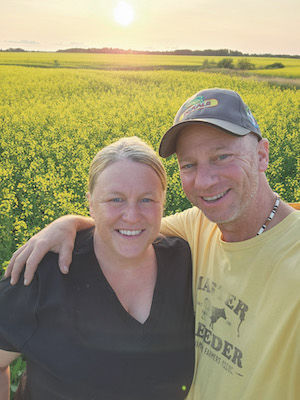
Sean MacKey and his wife, Kerry Schubert use FieldView to help them make the most of their soybean, wheat peas, oats, canola and cover crops they grow on their farm near New Liskeard, ON.
This year, he consulted an agronomist to devise a plan, and they both looked at FieldView to address an issue with soybeans. “We viewed a yield map and looked at the planting date,” he says. “Was it a bad section of the field? Do we need to increase our fertilizer package in that area?”
IMAGERY IS EVERYTHING
Mackey appreciates that he can see things more clearly with FieldView. Field health imagery is crucial for his farm due to periodic bouts of frost. On a recent inspection, one of his fields looked fine, but the imagery revealed an area that required re-seeding because the plants had been killed by frost on a section of black muck further back in the field.
Since he relies heavily on agronomists, he benefits from data sharing and the ability to integrate FieldView with Farm TRX, a precision yield monitor. This allows for better recommendations based on real data.
“I love that I can transmit the data to whoever I want,” says MacKey. “Anytime we can have another set of eyes viewing our operation, it will only mean greater yields and profits, and that’s why we’re all in the game.”
For a guy who used to have a separate notebook where he recorded each growing season, this ease of sharing is vital. “I sometimes visit my neighbour to talk about how we deal with different farming issues,” he says. “Now when I go, I don’t have to lug binders and notepads with me, I just take my iPad that has soil maps, yield maps, and all the other data in one spot.”
All in all, it seems the only constant in farming is change, but if Lexie and Lance Adamson and MacKey get their way, hi-tech tools like FieldView are here to stay.
